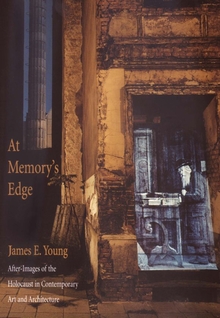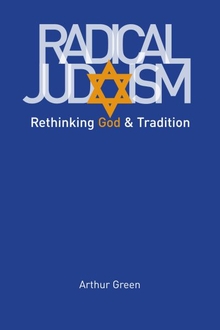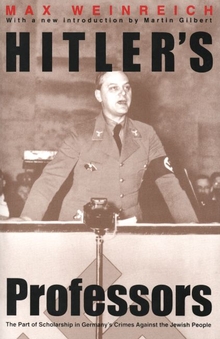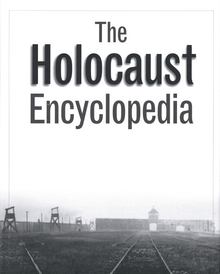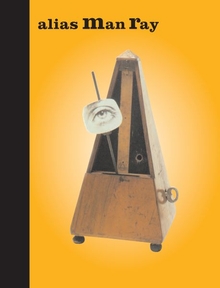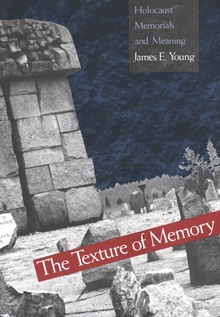At Memory's Edge
WARNING
You are viewing an older version of the Yalebooks website. Please visit out new website with more updated information and a better user experience: https://www.yalebooks.com
After-Images of the Holocaust in Contemporary Art and Architecture
James E. Young
In exploring Germany’s memorial crisis, Young also asks the more general question of how a generation of contemporary artists can remember an event like the Holocaust, which it never knew directly. Young examines the works of a number of vanguard artists in America and Europe—including Art Spiegelman, Shimon Attie, David Levinthal, and Rachel Whiteread—all born after the Holocaust but indelibly shaped by its memory as passed down through memoirs, film, photographs, and museums. In the context of the moral and aesthetic questions raised by these avant-garde projects, Young offers fascinating insights into the controversy surrounding Berlin’s newly opened Jewish museum, designed by Daniel Libeskind, as well as Germany’s soon-to-be-built national Holocaust memorial, designed by Peter Eisenman.
Illustrated with striking images in color and black-and-white, At Memory’s Edge is the first book in any language to chronicle these projects and to show how we remember the Holocaust in the after-images of its history.
James E. Young, professor of English and Judaic studies at the University of Massachusetts at Amherst, is also the author of The Texture of Memory, published by Yale University Press, which won the National Jewish Book Award.
“The brilliance of James Young’s theoretical insights is matched by his outstanding knowledge of the vast array of representations of the Shoah and by his artistic and literary sensitivity. This will become an influential book.”—Saul Friedländer
"James Young explores in fascinating detail the ethical, aesthetic, and historical problems that accompany contemporary attempts at Holocaust memorialization, whether by individual artists or by a whole country, Germany. His chapters on Berlin’s new Jewish Museum and its recently voted Holocaust memorial read like suspense tales, without letting us forget that there is no redemptive ending to the story. The place of Europe’s murdered Jews can never be ’filled,’ and the best memorials incorporate that void. Continuing his earlier work on Holocaust memorials, in After-Image Young makes a compelling case for the postmodern monument. A powerful, thought-provoking book."—Susan Rubin Suleiman, author of Risking Who One Is: Encounters with Contemporary Art and Literature
“Like everything that Young has written, this book shows what sympathetic intelligence and acute powers of observation can offer when confronted with a subject whose emotional content threatens to overwhelm anyone who touches it. . . . In the rapidly developing field of ‘memory studies,’ Young’s book . . . is to be welcomed. . . . [T]his book provides for further study of the nature and meanings of memory, and on the way contemporary artists contribute to the broad and growing discussion of what memory is.”—Jay Winter, Art Bulletin
“James E. Young empathetic reflections on post-Holocaust art in At Memory’s Edge . . . examines the intellectual tenets of the new orthodoxy. . . . [Young is a] professor of impressive literary agility.”—Adam Spiegel, Baltimore Sun
“Young . . . here asks the question: How can a generation of contemporary artists, writers, architects, and composers remember an event like the Holocaust, which it never knew firsthand? . . . Insightful.”—Booklist
“A gripping read.”—Jane Liddell-King, Jewish Chronicle
"[An] always lucid and thought-provoking writer."—Monica Bohm-Duchen, Jewish Quarterly
“At Memory’s Edge is a beautifully written and illustrated book that tells us something profound about the featured artistic projects and their contexts.”—Natasha Leher, Jewish Quarterly
“A masterful examination of Holocaust monuments created by artists born after 1945, the author pays deliberate attention to anti-establishment artists and their creations.”—Frances W. Schwartz, New Jewish Books
“A valuable study of Holocaust memorials.”—New York Review of Books
“Young’s book needs no extra boost, and yet this recent debate over the meaning of German nationalism gives his subject another dimension of topicality, proving again how accurately discussions of art can pinpoint all that’s buried just beneath the surface of everyday life.”—Robert Leiter, New York Times Book Review
“[Young] gives an insider’s look at the process that got Daniel Liebeskind’s celebrated museum built, and also takes stock of the echoes of the Holocaust he finds in the work of other artists and architects. . . . Full of wryly sensitive and firm observations. . . . Those interested in the subject will find Young’s treatment accessible and engaging.”—Publishers Weekly
“By his treatment of this subject, Young reminds us that artistic memorialization can be more effective in telling the story of the Holocaust than the methods we consider sacred, such as history and literature, especially if it catches the viewer unexpectedly.”—Stephen C. Feinstein, SHOFAR
“[At Memory’s Edge] truly broke new ground. . . . Young’s greatest attribute in this important book is that his visual honesty in relation to this greatest of themes will sustain its dialectic and . . ;. keep it in proportion until the time is ripe for another re-assessment.”—Julian Freeman, The Art Book
“In an age of memorial proliferation in American public culture, the struggles over the meaning and forms of Holocaust memorials described in At Memory’s Edge raise broader questions that will be of interest to many public historians.”—The Public Historian
Publication Date: February 8, 2002
56 b/w + 47 color illus.

